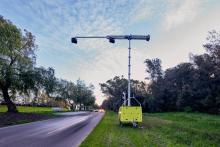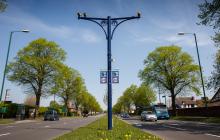The Australian Road Research Board (ARRB) has highlighted key problems with road safety. According to the ARRB, these issues must be addressed if Australia’s road casualty rate is to be reduced. Road death tolls are being reduced as he latest results show, but more work needs to be done.
According to the ARRB, the road death tolls in Victoria dropped 20% for 2018 when compared with the previous year. This is a major improvement, showing the gains made by Victoria’s road agency
Other states have also seen road fatalities drop, by 10% for New South Wales and a major drop in South Australia also, while Western Australia saw its lowest yearly road death toll on record. Overall, the Australian road death toll dropped by over 6% for 2018 when compared with 2017.
Around 1,100 people are killed on Australia’s roads each year but more than 30 times as many are injured in road crashes. And not enough is being done to reduce the issue of serious injuries.
According to the Australian Automobile Association and the Australasian College of Road Safety, the 2018 road death rates are certainly lower than those for 2017. However, these figures merely see a return to the statistics for 2015.
The
Chief executive at the AAA is Michael Bradley and he said that the 2018 road toll figures are “nothing to celebrate” and while road tolls fluctuate. He explained that the National Road Safety Strategy is failing because of a lack of resources and willpower from politicians and bureaucrats alike.
The ARRB says that the original National Road Safety Strategy was agreed to by all States in 2011. However none are on track to meet the agreed targets.
The ARRB says that an independent inquiry into the National Road Safety Strategy offered 12 recommendations to address the problem. It says that better funding, resourcing and new measurable targets geared towards reducing harm on the roads were listed as key. Also among the recommendations was Vision Zero, setting the ambitious target of no more road deaths in Australia by 2050, and no road deaths for all major capital city CBD areas and high-volume highways by 2030.
“We’ve had a Vision Zero in Australia for the last couple of decades, but now there’s a firm line in the sand following the Inquiry,” Australian Road Research Board transport safety expert Dr Blair Turner said.
“We know it’s ambitious, but some parts of Australia have zero fatalities, so it’s do-able. You see in workplace health and safety, and in the aviation industry, they have a zero tolerance around deaths and injuries. Road safety shouldn’t be any different.”
The issues around road safety are complex and changing and a growing problem is with smartphone use. The ARRB has highlighted some key issues around road safety for 2019.
A newer, safer vehicle choice can save lives. Advanced safety features such as autonomous emergency braking and electronic stability control are now becoming commonplace in base model sub-A$20,000 cars. ARRB research shows that given the right road conditions, these features save lives and reduce injuries. “As the fleet upgrades over time, we’ll see further improvements,” Dr Turner said. But Australians keep their cars longer than they should. ANCAP, Australasia’s independent vehicle safety authority, shows that cars built in 2001 or earlier make up 20% of the cars on Australian roads. Yet they account for more than 33% of the fatalities. The research is clear on this as newer cars are much safer choices. Replacing an old car with a newer one is a simple way to boost safety.
Victoria has invested heavily in wire crash barriers on roads. These high tension wire ropes are now installed in the centre of dual carriageways and on edges of high-risk rural roads to ensure cars that lose control do not leave the road, or crossover into the opposing lane. Research shows they significantly reduce deaths and serious injuries. Victoria’s Transport Accident Commission (TAC) has been at the forefront of pushing their introduction. Drivers will make mistakes, and acknowledging this and helping making outcomes more forgiving is an important element of road safety. “Road users are human, and to be human is to err,” said Dr Turner, an expert in the Safe Systems approach to road safety. “We’re seeing something like a 60-80% reduction in fatal and serious injury outcomes in Victoria as a result of wire rope safety barriers.” Dr Turner also points to other road infrastructure, such as roundabouts, which produce a similar benefit. “The basic philosophy with each is that the design prevents a serious i
njury when things do go wrong,” he said.
More than 10 million Australians admit to doing something dangerous behind the wheel, according to new research. 38% admit to eating take-away food while driving. Another 25% admit to using a mobile phone to text or utilise social media while at the wheel. The smartphone revolution has added a new layer to driver distraction, and it is a growing issue. In
Despite the warnings and educational campaigns and drivers being aware of the dangers, there is plenty of risky behaviour that costs lives and put others in peril. In Queensland, more than 25% of road deaths last year were attributable to failure to wear a seatbelt. More than 400 in South Australia have been caught driving with an unrestrained pet in their lap over the past three years. Worse still, the Queensland seatbelt issue has been going on for years and the numbers increased in 2018. Excessive speed and fatigue also remain constants. Other problems are caused by drug-affected, drunk drivers and people in unlicensed or stolen vehicles.
There is an equation that puts a price on death and serious injury. this complex formula takes into account where the accident happened and the scale of the crash. But using the most accepted worldwide approach, one Australian road death costs around A$7.5 million, and an injury between A$20,000 and A$360,000 depending on its severity. That means road injury and death costs Australia around A$70 million/day and A$30 billion annually.
While initiatives like wire crash barriers and better skid resistance, and other infrastructure improvements are helping in well-known blackspots or high-volume traffic areas, what about the roads less travelled? Dr Turner says roads which carry lower volumes of traffic but are high-risk parts of the network need different strategies. “We are lacking strategies on lower volume roads. Maybe things like different road configurations, appropriate speed management and in-car warnings can help.” For low quality roads and urban arterial roads, there also need to be strategies especially geared towards vulnerable road users, such as pedestrians and cyclists.
Vulnerable road users, such as motorcyclists, cyclists and pedestrians, are at particular risk. Cities and towns often favour drivers over riders and walkers by design, so the risks for so-called vulnerable road users are greater than they should be. Despite Australia introducing compulsory helmet use amongst cyclists casualty rates have increased, showing that more effective strategies are required. Addressing shortcomings in the behaviour of drivers is crucial to improving safety for vulnerable road users.
Australia’s road safety problems are a cause for concern
The Australian Road Research Board (ARRB) has highlighted key problems with road safety. According to the ARRB, these issues must be addressed if Australia’s road casualty rate is to be reduced. Road death tolls are being reduced as he latest results show, but more work needs to be done.
According to the ARRB, the road death tolls in Victoria dropped 20% for 2018 when compared with the previous year. This is a major improvement, showing the gains made by Victoria’s road agency VicRoads and the state’s Tr






